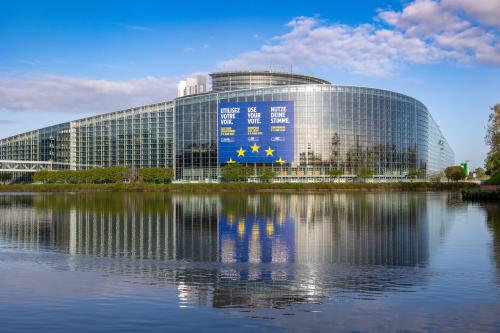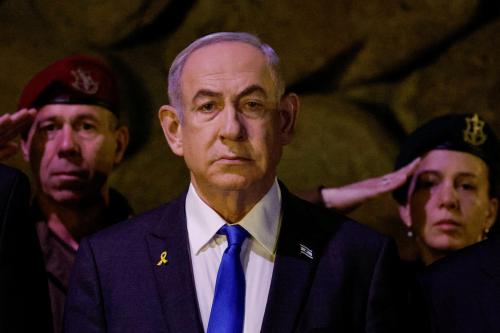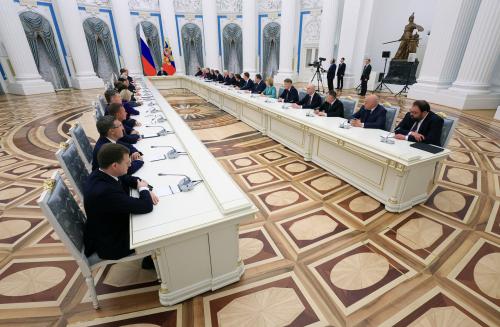This week, Washington will welcome a large gathering of ministers of finance and development, and central bank governors for the 2013 World Bank and IMF Annual Meetings.
Two issues emerge as the most important for Africa: (1) the replenishment of the International Development Association (IDA17) which occurs every three years; (2) the new World Bank Group Strategy, which happens less frequently.
Replenishment of the International Development Association (IDA17)
The next IDA17 Replenishment Meeting will take place on October 14-15, 2013 and will pave the way for the final meeting in Moscow at the end of the year. IDA is one of the world’s largest sources of aid and the World Bank’s main fund for the poorest countries. In 2013, it committed $8.2 billion—more than half of its resources—to projects in Africa. Grants account for about 20 percent of IDA funding and the rest is in the form of interest-free and long-term credits. IDA is replenished every three years by both developed and developing country donors, and 52 countries contributed $49.3 billion during the last round of replenishment.
The new World Bank Group Strategy
Last week, World Bank President Jim Young Kim in a speech at George Washington University outlining his new strategy for the World Bank to meet the institution’s two main goals: ending extreme poverty, which targets people earning less than a $1.25 per day by 2030 and boosting shared prosperity. In particular, two elements of the strategy merit some attention:
- More Resources to Fragile and Conflict-Affected States: The new strategy for the bank will commit more resources to fragile and conflict-affected states. It aims at increasing the share of both IDA and International Finance Corporation (IFC) financing to fragile and conflict-affect states by about 50 percent in the next three years.
- A Solutions Bank: The new strategy calls for the World Bank Group to become a solutions bank with results for the poor as its central benchmark. It aims to bring together the different parts of the World Bank Group–the bank, which works with governments; the IFC, its private sector arm; and the Multilateral Investment Guarantee Agency, or MIGA, which provides political risk insurance—to leverage its global practices and partner with stakeholders.
During the annual meetings, African governors should support the replenishment of IDA since it is one of the largest sources of assistance for the world’s 81 poorest countries, 39 of which are in Africa. The IDA17 period will cover the target date for the achievement of the Millennium Development Goals and the launch of the post-2015 global development agenda. For poor countries, replenishing IDA will be the main instrument to mobilize the resources needed to reach the new set of ambitious development goals that African countries and the development community are setting up. They should also welcome the commitment for more resources to fragile and conflict-affected states which have higher rate of extreme poverty than other countries. More than half of the fragile and conflict-affected countries are in Africa and are IDA-eligible. Increased commitment for reconstruction and development in such countries has the potential for positive spillover. Support to these countries has transformational benefits not only for the individual countries but also for their regions. The situation in Guinea and the Democratic Republic of Congo is a good example. These two countries have the potential to provide much-needed power to neighboring countries in West Africa and the Great Lakes region, respectively.
African governors will need to find strong arguments to convince a number of IDA contributors which are themselves facing financing constraints as a result of the financial crisis and difficult global economic conditions. A number of options are currently on the table, some of which will include difficult trade-offs between financing for fragile and conflict-affected states, other IDA-eligible countries, regional projects, and other uses of funds. A strong IDA replenishment would help avoid some of the trade-offs.
But beyond direct funding, IDA money should be used to help leverage additional resources, including from other donors, recipient governments, and the private sector. Africa is growing fast and its transformational agenda requires more resources than what IDA alone can provide. The new World Bank Group strategy seems to be in line with Africa’s transformational agenda. It is too soon to say how it will fare but one measure of its success should be how the new World Bank will be able to play a catalytic role and partner with different stakeholders to assist African countries on the road to extreme poverty eradication and shared prosperity.



Commentary
The 2013 World Bank and IMF Annual Meetings: What’s New This Year and What Does It Mean for Africa?
October 7, 2013